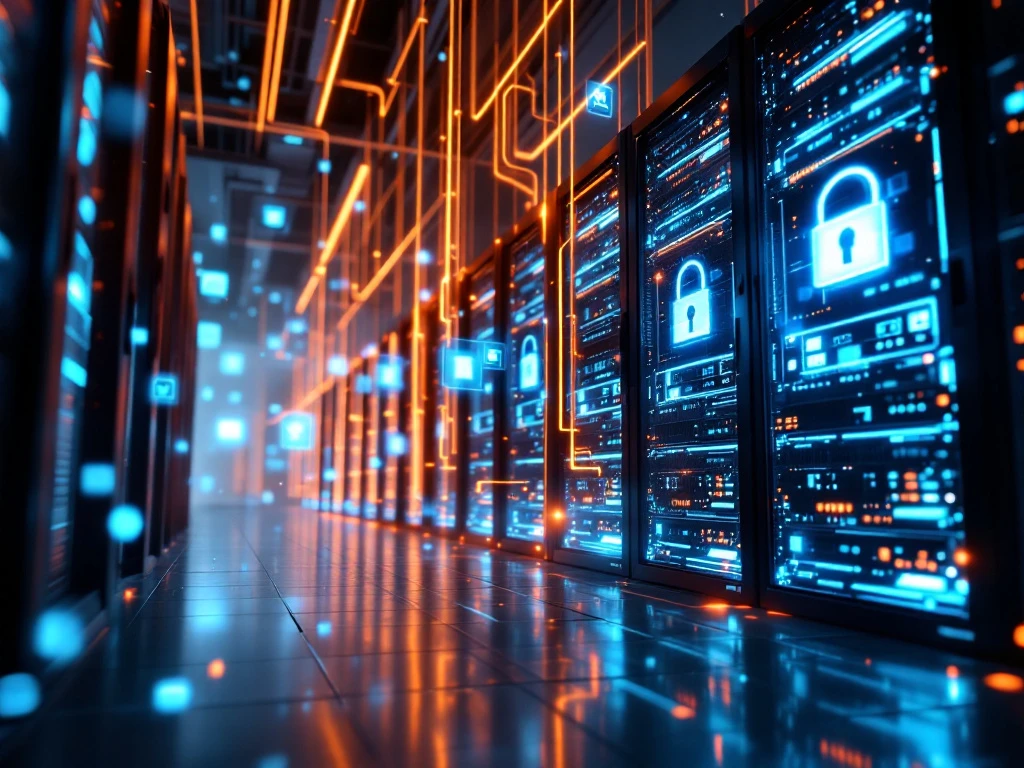
Datacenter services protect against cyber threats through multiple security layers including physical access controls, network security protocols, and continuous monitoring systems. These comprehensive measures create barriers against ransomware, DDoS attacks, and other malicious activities while ensuring rapid incident response and compliance maintenance for critical infrastructure.
What are the most common cyber threats targeting datacenters today?
Datacenters face four primary cyber threats: ransomware attacks that encrypt critical data for payment demands, distributed denial-of-service (DDoS) attacks that overwhelm network resources, insider threats from compromised employee access, and advanced persistent threats (APTs) that establish long-term unauthorized access for data theft.
Ransomware represents the most financially damaging threat, with attackers specifically targeting datacenters because they house valuable data for multiple organizations. These attacks often begin through phishing emails or compromised remote access credentials, then spread laterally across networks to maximize impact.
DDoS attacks aim to disrupt datacenter operations by flooding networks with excessive traffic, making services unavailable to legitimate users. Cybercriminals often use botnets containing thousands of compromised devices to generate attack traffic that can overwhelm even robust infrastructure.
Insider threats emerge from employees, contractors, or business partners who misuse their authorized access. These threats are particularly dangerous because they bypass external security measures and can remain undetected for extended periods while causing significant damage.
Advanced persistent threats involve sophisticated attackers who gain initial access through various methods, then establish persistent presence within datacenter networks. These threats often involve state-sponsored groups or organized cybercriminal organizations seeking valuable intellectual property or sensitive customer information.
How do physical security measures protect datacenters from cyber attacks?
Physical security measures create the foundation of datacenter cybersecurity by preventing unauthorized access to servers and network equipment. Multi-layered access controls including biometric scanners, key card systems, and security personnel ensure only authorized individuals can reach critical infrastructure components.
Biometric authentication systems using fingerprint, iris, or facial recognition provide highly secure access control that prevents credential sharing or theft. These systems create detailed audit trails showing exactly who accessed specific areas and when, enabling rapid investigation of any security incidents.
Surveillance systems with high-definition cameras monitor all datacenter areas continuously, providing real-time threat detection and forensic evidence collection. Modern systems use artificial intelligence to identify unusual behavior patterns and alert security teams to potential threats immediately.
Environmental monitoring protects against both accidental and intentional threats by tracking temperature, humidity, power consumption, and air quality. These systems can detect unauthorized equipment installations or environmental manipulation attempts that might compromise security.
Secure hardware deployment practices ensure that all equipment installations follow strict protocols to prevent tampering or unauthorized modifications. This includes verification of hardware integrity, secure staging procedures, and documented chain-of-custody processes that maintain security throughout the deployment lifecycle.
What network security protocols should datacenters implement for maximum protection?
Effective datacenter network security requires layered defense protocols including next-generation firewalls, intrusion detection systems, network segmentation, end-to-end encryption, and continuous monitoring platforms that work together to identify and block threats at multiple levels.
Next-generation firewalls provide deep packet inspection capabilities that examine network traffic for malicious content, blocking threats before they reach critical systems. These firewalls use threat intelligence databases that update continuously to recognize new attack patterns and suspicious activities.
Intrusion detection and prevention systems monitor network traffic patterns to identify unusual behavior that might indicate cyber attacks. These systems use machine learning algorithms to establish baseline network behavior, then alert security teams when deviations suggest potential threats.
Network segmentation creates isolated zones within datacenter infrastructure, limiting the spread of security breaches. This approach ensures that compromised systems cannot easily access other network areas, containing threats and reducing potential damage from successful attacks.
Encryption protocols protect data both in transit and at rest, ensuring that intercepted information remains unreadable to unauthorized parties. Modern datacenters implement strong encryption standards for all communications and storage systems, making stolen data useless to cybercriminals.
Continuous monitoring platforms provide real-time visibility into network activities, enabling security teams to detect and respond to threats quickly. These systems aggregate security information from multiple sources, providing comprehensive threat intelligence and automated response capabilities.
How does professional onsite support enhance datacenter cybersecurity resilience?
Professional onsite support strengthens datacenter cybersecurity through rapid incident response, proactive vulnerability management, and seamless integration with existing security frameworks. Skilled technicians provide immediate threat containment, security compliance maintenance, and expert guidance during critical security events.
Rapid incident response capabilities ensure that security threats receive immediate attention from qualified professionals who can assess situations quickly and implement appropriate countermeasures. This immediate response capability significantly reduces the potential impact of security breaches and minimizes downtime.
Security compliance maintenance involves regular audits, updates, and verification that all security measures continue meeting industry standards and regulatory requirements. Professional technicians ensure that security configurations remain optimal and that new vulnerabilities receive prompt attention.
Vulnerability assessments conducted by experienced professionals identify potential security weaknesses before they can be exploited by attackers. These assessments include both automated scanning and manual testing to provide comprehensive security evaluations.
Integration with existing security frameworks ensures that onsite support complements rather than conflicts with established security protocols. Professional services work within your current security architecture, enhancing capabilities while maintaining consistency across all security measures.
Expert onsite technicians bring specialized knowledge of both cybersecurity best practices and practical implementation challenges. Their presence ensures that security measures remain effective during routine maintenance, emergency situations, and system upgrades that might otherwise create temporary vulnerabilities.
The combination of comprehensive security protocols and professional support creates robust datacenter protection that adapts to evolving cyber threats. This integrated approach ensures that your critical infrastructure remains secure while maintaining the operational flexibility needed for business continuity and growth.
Frequently Asked Questions
How often should datacenter security assessments be conducted to stay ahead of emerging threats?
Security assessments should be performed quarterly for comprehensive evaluations, with monthly vulnerability scans and continuous monitoring in between. Critical assessments should also occur after any major infrastructure changes, security incidents, or when new threat intelligence indicates elevated risk levels.
What's the typical response time for containing a security breach in a well-protected datacenter?
Professional datacenter operations typically achieve initial threat containment within 15-30 minutes of detection, with full incident response and remediation completed within 2-4 hours. This rapid response is made possible through automated detection systems, pre-established response protocols, and onsite security expertise.
Can small to medium-sized businesses afford enterprise-level datacenter security measures?
Yes, through managed datacenter services and cloud-based security solutions that provide enterprise-grade protection without the full infrastructure investment. Many providers offer scalable security packages that include professional monitoring, incident response, and compliance management at costs appropriate for smaller organizations.
What are the most critical security mistakes organizations make when transitioning to datacenter services?
The most common mistakes include inadequate access control planning, insufficient network segmentation during migration, and failure to maintain security protocols during the transition period. Organizations also frequently underestimate the importance of staff training on new security procedures and incident response protocols.
How do you balance security requirements with operational efficiency in datacenter management?
Effective balance is achieved through automated security processes, risk-based access controls, and integrated monitoring systems that provide security without hindering operations. The key is implementing security measures that enhance rather than impede workflow, using technologies like single sign-on, automated compliance reporting, and intelligent threat detection.
What backup and recovery capabilities should be in place specifically for security-related incidents?
Security-focused backup strategies should include immutable backups stored offline, point-in-time recovery capabilities, and isolated recovery environments for testing restored systems. Recovery plans must include procedures for validating system integrity, removing malware, and ensuring no persistence mechanisms remain before bringing systems back online.
How can organizations verify that their datacenter provider's security claims are legitimate and effective?
Request detailed security certifications (SOC 2, ISO 27001, PCI DSS), conduct third-party security audits, and review incident response track records and client references. Additionally, ask for demonstrations of security capabilities, review SLA terms for security guarantees, and ensure transparency in security reporting and communication protocols.
How do datacenter services protect against cyber threats?
